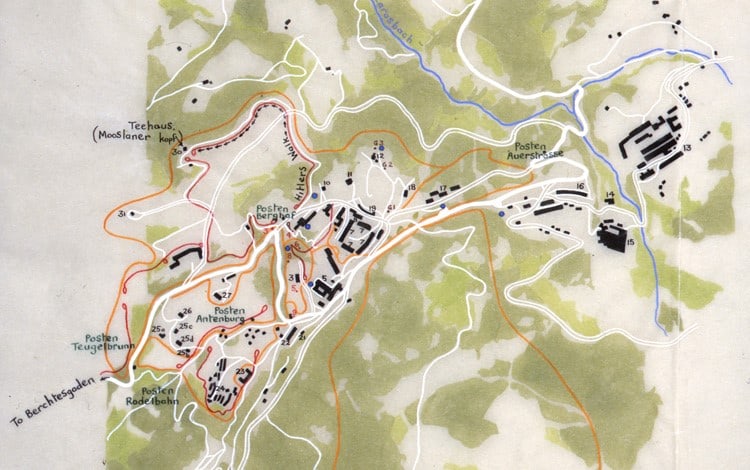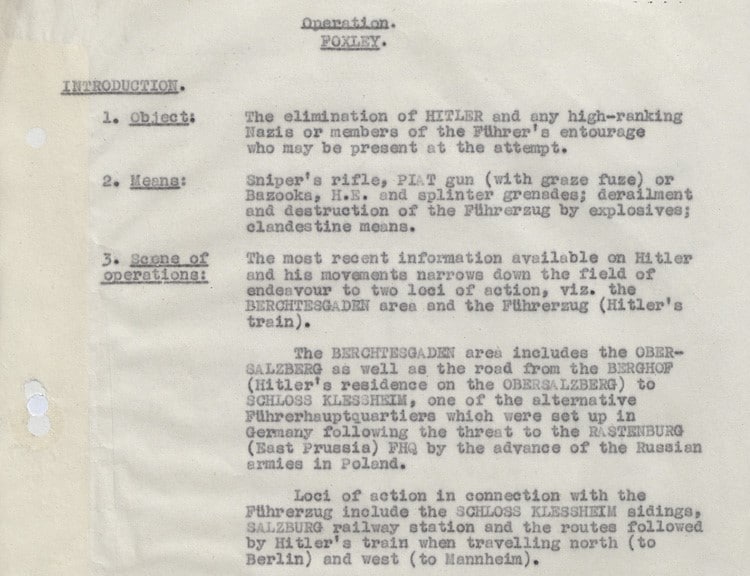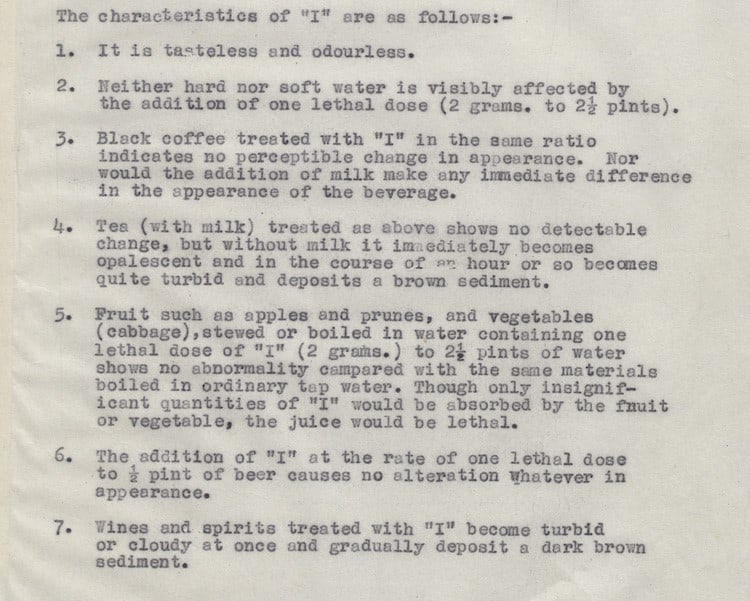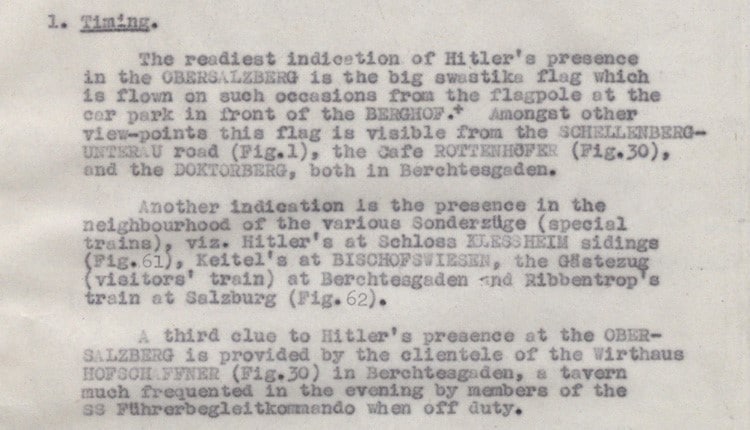The option of Assasinating Hitler
The debate of assassinating the head of an enemy organisation is popular nowadays. There are efficacy, legal and ethical concerns surrounding ‘targeted killings’. These concerns also exist through war-periods. Legal and ethical issues play a minor role, during war-periods, in comparison to strategic and tactical matters. During World War 2, Assassinate Hitler evolved from a ‘how’ question to an ‘if’ question and Operation Foxley was one of a number of plots.
- The symbolism of Hitler highly likely maintained an assassination attempt to be considered as an option. Different methodologies of employment are discussed and questioned. On the other hand, the necessity of Assassinating Hitler appears as a minor debate with some objections.
- The strategic and tactical need to eliminate the target have more importance than the viability of the operation. The safety of ‘agents’ and probability of success is likely less significant than the need to successfully carry out an operation.
- Assassinating Hitler likely depended on accurate tactical intelligence to determine the viability of the operation. The SOE adapted the operation and execution as intelligence flowed in. Ultimately, it was tactical accurate intelligence that grounded the choice of scenario.

The SOE
Section X
The German department of the SOE was referred to as section X. The German desk was established on the 18th of November 1940, re-naming itself the German directorate in October 1944. Led briefly by Brien Clarke, LC Ronald Thornley took over its leadership including the mission of Assassinate Hitler.
The secretive nature of Operation Foxley meant not all members of the SOE governing council knew of the plan. Compartmentalising information and identities within the SOE and different sections were common. Protecting information within a specific section indicates the significance of an operation and the potential threat of exposures, similar to Operation Anthropoid.
Assassinating Hitler and the little Foxleys
Operation Foxley II was the name of the operation to Assinate other high-ranking Nazi generals. Targeting Hitler was a priority, at least psychologically. On the other hand, in March 1945 other identities emerged as more strategically significant to the Nazi regime:
- Bruno Ritter von Hauenschild
- Goebbels’ second-in-command and commander of the military district of Berlin.
- Goebbels’ second-in-command and commander of the military district of Berlin.
- Josef Goebbels
- Gauleiter of Berlin, Propaganda minister and commander-in-chief of armed forces stationed in Berlin.
- Gauleiter of Berlin, Propaganda minister and commander-in-chief of armed forces stationed in Berlin.
- Otto Ernst Remmer
- Ideological heavyweight. Remmer played a key role in undermining Operation Valkyrie, the attempt to assassinate Hitler within the Nazi regime.
- Ideological heavyweight. Remmer played a key role in undermining Operation Valkyrie, the attempt to assassinate Hitler within the Nazi regime.
- Otto Skorzeny
- Given permission by Himmler to conduct and run all sabotage, underground and clandestine operations in Europe.
Due to available intelligence, Skorzeny was the only target considered to be viable. By the date of consideration, Nazi Germany was a month away from crumbling.

Assassinating Hitler – Operation Foxley
In 1941, the OSS, the SOE and SIS discussed the possibility of targeting Hitler and potential solutions. The degree of Hitler’s security detail, combined with his erratic behaviour, made travel-related environments ideal for the assassination. The SOE sought a degree of detail to almost certify the success of the operation. For example, the detailed description of the Führerzug (Hitler’s private train), its water supply system and its maintenance responsibility.
The Führerzug
In 1941, a separate sabotage operation inspired the activity of section X towards Operation Foxley. Polish saboteurs placed explosives on a railway that Hitler was approaching between Freidorf and Schwarzwasser. The Führerzug unexpectedly stopped, causing the death of another 430 passengers on another train. The idea promoted the production of intelligence towards an inside-out description of the train, its members and characteristics.
The Führerzug split into 3 sections. Hitler travelled in the second, nicknamed ‘Amerika’. The first and third sections, ‘Kleinasien’ and ‘Asien’, carried security and staff personnel. The first and last coach of each section carried anti-aircraft machinery, while prominent figures travelled in coaches 11, 12 and 13 of Amerika. There was a lack of collection capabilities involving crucial intelligence. The number of coaches on each section, as well as timetables of arrivals and departures was considered a state secret. Section X considered that Amerika had a range from 6 to 20 coaches. Although, in 1943 during the Russia campaign, Amerika allegedly consisted of 11 coaches all armed with surface and anti-aircraft artillery.

Poison:
Section X established that targeting Hitler using poison would be ideal in the Salzburg railway station. Section X identified substance ‘I’ to be lethal in doses between 2 grams and 1.2L. ‘I’ had an action-effect of 7 days, and faced no change in appearance when mixed with any liquid with one exception. That is, milk-less tea almost immediately reacted to ‘I’, despite intelligence suggesting Hitler drank tea by pouring first the milk.
Targeting Hitler was attempted through the fresh-water supply of the Führerzug. Poisoning the supply was only an available option during the previous night of travel. The degree of state-secrecy created little margin on Hitler’s choice of Führerzug and subsequent poison operation. SIS detected 6 French civilian women in Salzburg responsible for the exterior-washing of the Führerzug. Section X hoped to convince one of the six to poison the water supply. Nevertheless, there was a lack of intelligence making the operation unreliable. For example, Section X did not know where the Führerzug was re-supplied with water, Salzburg or Klessheim.
Assault:
Section X considered Schloss Klessheim as a preferred location for an armed assault targeting Hitler. The forested area provided cover for the agents except during winter due to natural leaf cover. Nevertheless, the armed assault option was exhausted. There was a lack of intelligence surrounding the preferred direction of Hitler’s mobile escort from the Klessheim to the railway. The potential shooter, armed with a PIAT anti-tank gun and a sniper rifle, had little probability of success. Depending on the preferred direction, there was a 90-270 metre distance to the target with little-to-no natural cover.
The Berghof
Targeting Hitler in his mountain retreat was considered a safe option, mainly due to a small-security detail. Although not small, Hitler would take larger risks in the Berghof where he perceived to be safe. Despite stamped blue cards given to visitors in the Berghof, individuals like the Milk-man avoided any type of identifications.
Located on the Obersalzberg, the degree of Hitler’s security detail implied a complicated scenario for the potential agents. Targeting Hitler implied learning to distinguish between Reichssicherheitsdienst (RSD) personnel in charge of Hitler’s security. The deployed agents needed to identify differences between mountain and Waffen SS uniforms of RSD personnel.

Sniper
Between 10:00 AM and 11:00 AM Hitler took his daily walk to the tea-house from the Berghof, lasting 15-20 minutes. The dictator abandoned most daily routines with the exception of the walk to the tea-house. Targeting Hitler implied 2 agents infiltrating the complex and fatally shooting the dictator.
Section X learned an incomplete account of RSD patrols. According to Section X there was enough intelligence collected, despite the gaps in intelligence. Section X identified vulnerabilities during the daily walk to the tea-house. At a by-pass, RSD pickets sat at 497 metres from Hitler’s location, while a patrol followed at a distance. Section X discovered that wire-mesh fencing was not electrified. This was an opportunity to infiltrate the Berghof without raising alarms.
In theory, two agents infiltrated the Berghof by the river Larosbach. Cutting into the wire fencing after 10AM when the RSD patrol passed, the agents would position around the by-pass. Armed with a Mauser sniper rifle, explosives bullets, grenades and wire-cutters, the agents sat 91-182 metres from Hitler’s walk route. Disguise was necessary for targeting Hitler. SOE-trained members needed to wear Gebirgsjäger (SS Mountain Troop) uniforms to disguise amongst other SS personnel in the vicinity. If the shooter failed, alternative plans to target Hitler’s emergency motorcade emerged, involving the use of a PIAT gun and a Bazooka.
Targeting Hitler: Considerations
The argument as to why Operation Foxley never occurred tends to involve the idea of a martyr. While this is debatable, the strategic contribution of Hitler to the Axis’ cause by 1944 was extremely poor. According to the head of Section X Ronald Thornley, targeting Hitler created a martyr when strategic concerns favour the allies. Air-Vice Marshal Ritchie lobbied towards waiting to see the reaction of the potential death of the dictator, after the 20th of July bomb plot. Simultaneously, Ritchie discussed the short-term benefits of maintaining Hitler alive due to his military incompetence.
Ultimately, the UK national archives de-classified documents regarding Operation Foxley in 1998. The concerns mentioned by SOE staff likely caused doubts to implement the operation. Despite motivations, targeting Hitler was studied in depth through different environments and methodologies.

